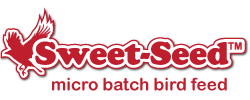5 Reasons A Full Hummingbird Feeder is a Safer Feeder

How often should you really refill your nectar? It is easy to see when birdseed feeders need to be refilled – when they're empty, they need refilling! Refilling nectar feeders takes a bit more consideration, however, and understanding that these feeders may need to be refreshed long before they are empty is important for every hummingbird lover.
5 Different Times You Need to Refill Nectar Feeders
Keeping hummingbirds supplied with clean, fresh nectar means feeders need to be refilled regularly. But when? You should always refill a hummingbird feeder when…
- The Feeder Looks Empty: When nectar falls so low that it is hard to see the actual level in the feeder, it is definitely time for a refill. While there may be some nectar remaining in the feeder's base, if the feeder sways or is slightly unbalanced, hummingbirds may not be able to sip from every feeding port. If they return to the feeder several times without success, they will move on to more reliable food sources and it may take a few days for them to return after the feeder is refilled.
- The Nectar Is Cloudy : Fresh hummingbird nectar should be crystal clear and easy to see through. When the nectar begins to look cloudy, filmy or translucent, however, fermentation of the natural sugars has begun. Severe fermentation can create mold and fungus that is toxic to hummingbirds. As soon as nectar clouds up, it is time to discard any remaining nectar, wash the feeder and refill it with fresh, clean nectar.
- Particles Are Floating in the Nectar: When a hummingbird feeder is filled with "floaties" it's time for new nectar. Small particles may be bits of undissolved sugar, tiny insects, pollen or other contaminants, but none are great for birds. Particles can quickly clog a nectar feeder and make it difficult or impossible for birds to sip, and these contaminants will also speed up the nectar's fermentation, making it less suitable for hummingbirds to drink.
- A Heat Wave Passes : While hummingbird nectar can easily withstand summer temperatures for a few days, a severe heat wave can speed up the natural fermentation of the nectar's sugars, spoiling it for hummingbirds. Discarding unused nectar after it has been exposed to a severe heat spike will ensure that hummingbirds are not at risk from fermenting nectar. During the hottest part of summer, a good rule of thumb is to refill a feeder 1-2 times each week at least.
- Heavy Rains Dilute the Nectar: Whiles most hummingbird feeders are protected from occasional rain showers, severe storms can cause problems. Not only can winds tip a feeder and spill nectar, but when a lot of rain collects on feeding ports, it can dilute the nectar birds are able to sip, making it less valuable for hungry hummingbirds. To prevent this problem, feeders can be brought indoors temporarily when storms hit, or else positioned in covered, sheltered spots such as under a deck awning to keep them safe from storms but still accessible to birds.
Every Time You Refill the Hummingbird Feeder...
No matter why a nectar feeder needs refilling, it is important to never add extra nectar to an already contaminated or fermenting reservoir. Even if the feeder appears completely empty, just adding new nectar will stir up any remaining residue in the base, making the new nectar instantly contaminated and less suitable for hummingbirds. Instead, old nectar should be discarded and the feeder thoroughly cleaned and dried before being refilled with fresh nectar. While the most insistent hummingbirds may miss a quick sip while the feeder is inaccessible, taking the time to refill it properly is critical to be sure you are always offering the healthiest, safest, most nutritious nectar for your backyard hummingbirds.
Image by Philip Wels from Pixabay
